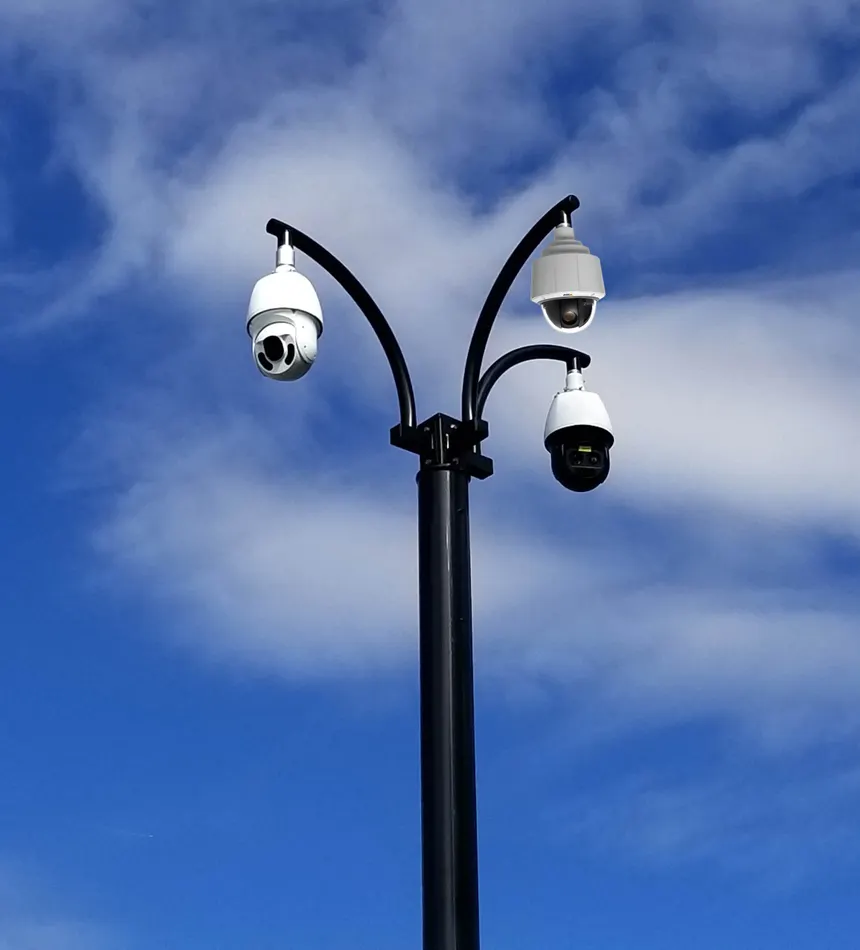In the competitive maritime logistics industry, efficient asset tracking has become a critical factor in optimizing port operations. While hardware-based solutions like RFID and GPS trackers have been the traditional go-to technologies, their implementation comes with significant hidden costs and operational challenges that many port operators only discover after investment. This article examines why hardware-dependent tracking methods are creating more problems than they solve, and why software-based alternatives are gaining momentum across the industry.
The Allure and Reality of Hardware Tracking Solutions
Port operators worldwide face mounting pressure to enhance visibility and control over thousands of vehicles moving through their facilities daily. Hardware-based tracking systems—primarily RFID tags, GPS trackers, and Bluetooth beacons—promise precise asset location data. On paper, these solutions appear compelling:
- Real-time location information for tagged assets
- Individual tracking capabilities for each vehicle
- Well-established technologies with decades of implementation history
- Familiar integration patterns with existing terminal operating systems
However, the operational reality tells a different story. A 2024 industry report highlighted that RFID systems often face technical challenges such as interference from metals and liquids, leading to reduced signal effectiveness, and compatibility issues between tags and readers. Additionally, ports implementing Bluetooth-based tracking solutions encounter significant infrastructure costs for gateways and integration with existing systems.
A survey conducted by McKinsey revealed that data silos and poor data quality remain significant barriers to automation in ports, hindering the efficiency of real-time tracking systems. Furthermore, a 2024 market analysis found that many ports are still grappling with fragmented IT setups, which complicates the integration of new technologies like IoT sensors and GPS trackers into terminal operating systems.
The True Costs of Hardware-Based Tracking
1. Overwhelming Capital Investment
The financial investment required for hardware implementation extends far beyond the initial purchase:
- Equipment Costs: For a medium-sized port handling 100,000 vehicles annually, the cost of RFID tags can get as high as $2,000,000 (AMI AssetTrack).
- Infrastructure Requirements: The installation of RFID readers at key checkpoints typically costs between $1,000 and $3,500 per reader for passive systems (XMINNOV).
- Network Upgrades: Many ports require significant upgrades to their communication infrastructure to support RFID systems. These upgrades can add $100,000 or more to implementation budgets (RFID Journal).
- Maintenance Reserves: Tag replacement due to damage or loss averages 15-20% annually for passive tags not to mention ongoing maintenance costs include battery replacements and system updates (Link Labs, AMI AssetTrack).
These expenses create a substantial barrier to entry, particularly for regional ports operating with constrained capital improvement budgets.
2. The Logistical Nightmare of Physical Tag Management
Perhaps the most underestimated aspect of hardware tracking systems is the operational burden they create. For ports handling roll-on/roll-off (RoRo) operations, this becomes particularly problematic:
- Installation Labor: Each vehicle requires physical tag attachment by trained personnel
- Removal Requirements: Tags must be retrieved before vehicle departure, creating a secondary workflow
- Damage Concerns: Many automotive manufacturers prohibit adhesive-based tags on new vehicles
- Battery Management: Battery-powered trackers require regular monitoring and replacement
- Inventory Control: Tag inventory becomes its own logistics challenge with ordering, storage, and accountability systems
For a port processing 500 vehicles daily, this translates to approximately 60-75 labor hours per day dedicated solely to tag management, essentially requiring 8-10 full-time employees whose sole responsibility is administering the tracking system itself.
3. Reliability Challenges in Maritime Environments
Maritime port environments present unique challenges for electronic hardware:
- Environmental Exposure: Salt air, extreme temperatures, and precipitation accelerate device failure
- Read Reliability: Metal-dense environments create RF interference and signal blocking
- Battery Performance: Cold weather dramatically reduces battery life in powered trackers
- Physical Damage: Routine vehicle movement and weather exposure leads to high tag damage rates

Credit: Jasper Verschuur
4. The Hidden Workflow Disruptions
Beyond direct costs, hardware-based tracking creates ripple effects throughout port operations:
- Processing Delays: Vehicle receiving procedures extend by 2-4 minutes per unit for tag installation
- Departure Bottlenecks: Tag removal requirements create secondary congestion points
- Exception Handling: Missing or failed tags require manual intervention and documenting
- Reconciliation Processes: Accounting for lost or damaged tags becomes an administrative burden
- Training Requirements: All personnel handling vehicles require training on tag protocols
These workflow disruptions compound as volume increases, creating a scalability challenge that grows exponentially with port throughput. During peak periods, congestion and inefficiencies can significantly impact operations. A 2024 report on port congestion noted that delays caused by capacity constraints and equipment malfunctions can reduce processing capacity by up to 20%, particularly during high-demand seasons.
The Software Alternative: Camera-Based Tracking Systems
In response to these challenges, forward-thinking ports are implementing camera-based tracking systems that eliminate the need for physical tagging while delivering comparable or superior tracking performance:
1. Infrastructure Leverage vs. Replacement
Camera-based solutions build upon existing security infrastructure rather than requiring entirely new systems:
- Existing Camera Utilization: Most ports already maintain comprehensive surveillance networks that can be leveraged
- Incremental Enhancement: Strategic camera additions can supplement coverage without wholesale replacement
- Processing vs. Hardware Costs: Investment shifts from thousands of physical devices to processing capacity

Credit: Strong Poles
2. Elimination of Tag Management Workflows
The most significant advantage comes from completely removing tag-related processes:
- Automatic Tracking Initiation: Vehicles are automatically identified and tracked upon entry
- No Physical Interaction: No hardware installation or removal required at any point
- Continuous Coverage: Tracking maintains without battery limitations or signal interference
- Workforce Reallocation: Personnel that would be dedicated to tag management can focus on value-adding activities
3. Operational Scalability
Software-based tracking systems demonstrate superior scalability characteristics:
- Processing Time Consistency: High volumes don't create exponential processing delays
- Predictable Operating Costs: Expenses remain relatively constant regardless of throughput
- Rapid Throughput Expansion: System accommodates volume increases without proportional cost increases
- Peak Handling Capability: Performance remains consistent during high-volume periods
Implementation Considerations
For ports considering software-based tracking, several key factors should guide the process:
1. Camera Infrastructure Assessment
Begin with a comprehensive evaluation of existing camera coverage:
- Identify high-traffic areas requiring supplemental coverage
- Assess camera specifications against tracking requirements
- Evaluate mounting locations for optimal field of view
- Map camera network to facility layout for coverage analysis
2. Integration Planning
Successful implementation requires thoughtful integration with existing systems:
- Terminal Operating System (TOS) connectivity requirements
- Data exchange protocols and formats
- User access and permission structures
- Alert and notification frameworks
3. Transition Strategy
A phased approach typically yields the best results:
- Parallel operation during initial implementation
- Targeted workflow transitions by operational area
- Staged training and adoption programs
Conclusion: The Future of Port Asset Tracking
The maritime logistics industry stands at an inflection point in asset tracking technology. While hardware-based solutions represented the first generation of digital tracking, their inherent limitations in cost, scalability, and operational burden are increasingly apparent. Software-based alternatives, particularly advanced camera tracking systems, are demonstrating compelling advantages:
- Elimination of per-asset tracking costs
- Removal of labor-intensive tag management workflows
- Improved reliability in challenging environments
- Superior scalability for high-volume operations
- Significantly lower total cost of ownership
For port operators facing increasing pressure to maximize efficiency while controlling costs, the transition from hardware to software tracking represents not just an incremental improvement but a fundamental paradigm shift in operational approach.
By embracing software-based tracking, ports can redirect resources from managing tracking systems to their core mission: moving cargo efficiently through their facilities. In an industry where margins are continuously pressured, this operational evolution provides a compelling competitive advantage that forward-thinking operators are rapidly embracing.
